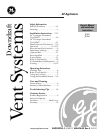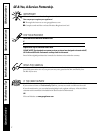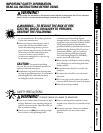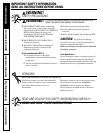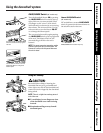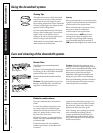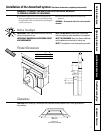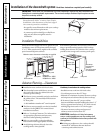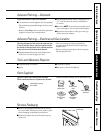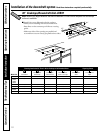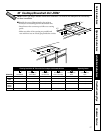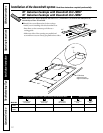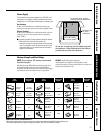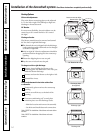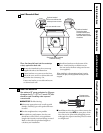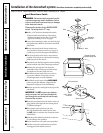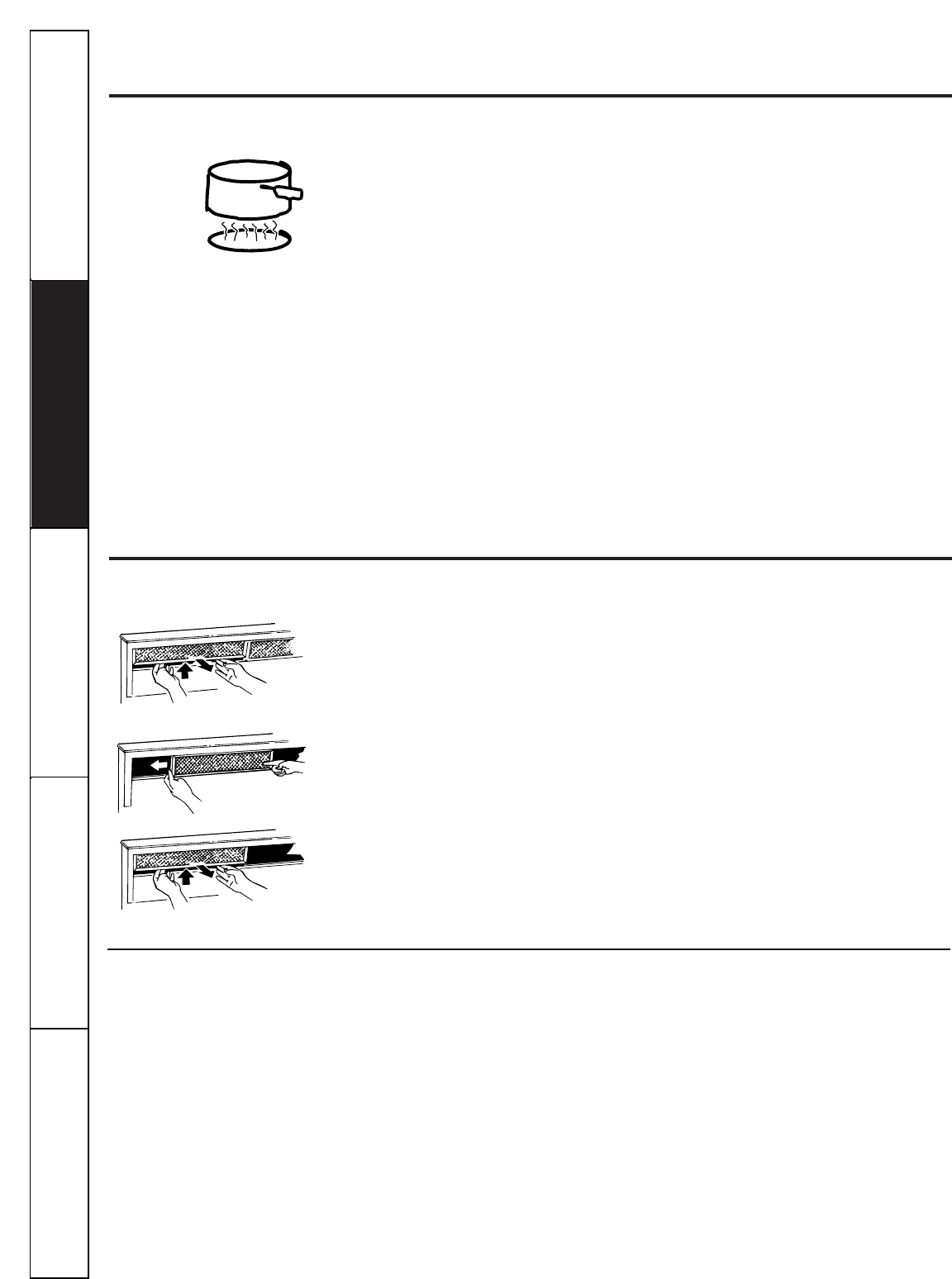
Using the downdraft system.
Care and cleaning of the downdraft system.
Operating Instructions
Safety InstructionsInstallation InstructionsTroubleshooting TipsCustomer Service
6
The efficiency of your downdraft depends on
a clean filter.
Frequency of cleaning depends on the type
of cooking you do. Grease filters should be
cleaned at least once a month.
Never operate the downdraft without the filters
in place.
To remove:
Lift up and pull the bottom out.
Remove the left filter first, then slide the
right filter to the left and remove it.
To clean:
Soak and then agitate in a hot
detergent solution. Light brushing may be
used to remove imbedded soil. Rinse, shake
and remove moisture before replacing.
Filters may be cleaned by placing in
dishwasher, although some slight color
fading may occur after several washings.
With careful handling, the filter will last for
years. If replacement becomes necessary,
order the part from your dealer.
Cooking Tips
The high air movement of this downdraft
system can increase the cooking times for
some foods. It may take longer to reach
high cooking temperatures if the downdraft
is turned to high right away. Adjust the fan
speed for best cooking results.
For best results when heating oil for deep
frying or when boiling water, use the front
surface units or wait until the water is
boiling or the oil is at frying temperatures
before turning on the downdraft.
The downdraft may not completely capture all the
steam from pans on the front burners.
Canning
When canning foods in a water-bath canner,
a gentle but steady boil must be maintained
continuously for the required time.
When canning foods in a pressure canner,
the pressure must be maintained
continuously for the required time.
Use of the blower at
HIGH
speed when
canning may reduce the temperature
enough to stop boiling. While canning,
we recommend using the downdraft at
LOW
speed and using the front surface unit.
Painted or metal surfaces
Grease filters
Do not use a steel-wool pad; it will scratch the
surface.
To clean the stainless steel surface, use a
hot, damp cloth with a mild detergent
suitable for stainless steel surfaces. Use a
clean, hot, damp cloth to remove soap.
Dry with a dry, clean cloth.
If food soil remains, try a general kitchen
cleaner, such as Fantastik®, Simple Green®,
or Formula 409®.
For hard-to-clean soil, use a standard
stainless steel cleaner, such as Bon-Ami®
or Cameo®.
Apply cleaner with a damp sponge. Use a
clean, hot, damp cloth to remove cleaner.
Dry with a dry, clean cloth. Always scrub
lightly in the direction of the grain.
After cleaning, use a stainless steel polish,
such as Stainless Steel Magic®, Revere
Copper and Stainless Steel Cleaner®, or
Wenol All Purpose Metal Polish®. Follow
the product instructions for cleaning the
stainless steel surface.



